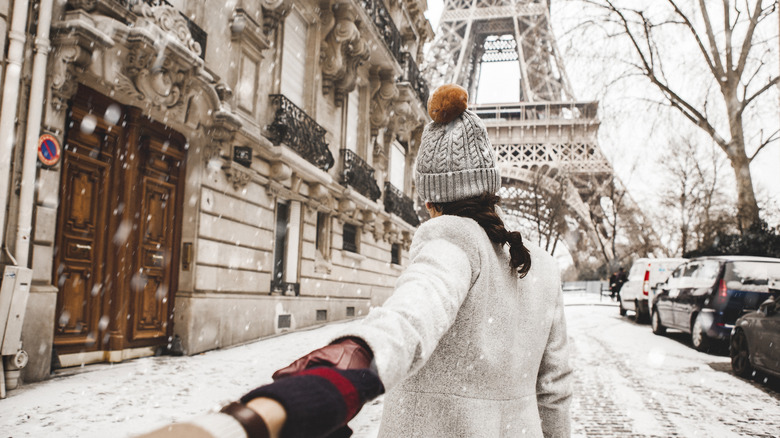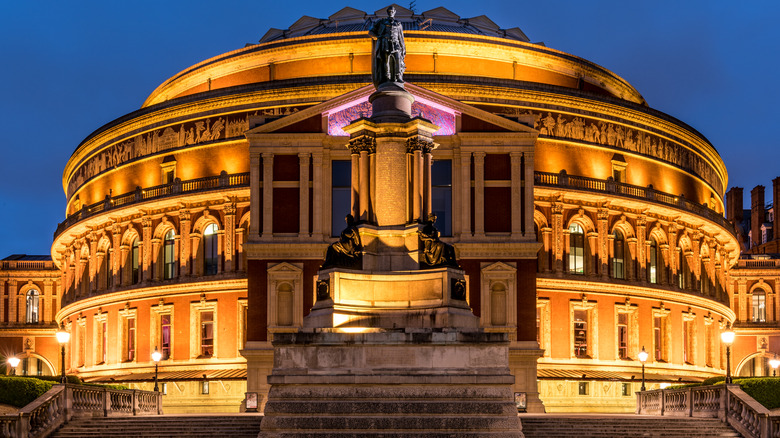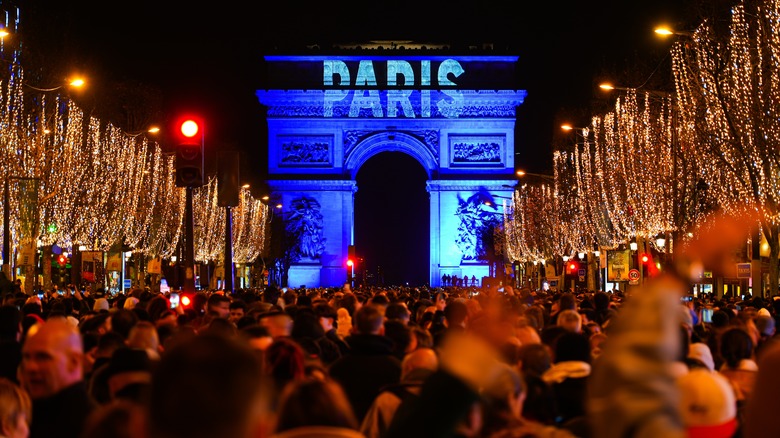Rick Steves' Top Tips For A Winter Trip To Europe
In the bustling summer of 2023, a staggering 89.8 million tourists flocked to Europe in July alone. The surge can be somewhat attributed to "revenge travel" after the pandemic; but generally speaking, Europe welcomes the most tourists when the weather is warm and clear.
Per travel expert Rick Steves, however, you could have a grander time during the off-season, aka winter, spanning from November through March. Contrary to the in-demand summer season, escaping to Europe during the winter is much more affordable. Airfares plummet to hundreds of dollars below peak season rates; while accommodations, ranging from luxurious hotels to budget hostels, are also considerably cheaper as they scramble to fill their rooms with guests. The best part is you'll encounter smaller crowds during this time and get a taste of what it's like to live in Europe like a local. Tourist-saturated attractions often transform into relatively peaceful places, making them a more leisurely affair. If luck is on your side, you may even have them all to yourself.
There are a few caveats, of course. Chief among them are the shorter days (expect darkness to descend at around 5 p.m.) and the persistent cold, dreary weather. Steves advises packing and wearing layers of clothing if you wish to keep warm and toasty. The trade-off is worth it, as you'll get the unique opportunity to enjoy Europe at its most authentic state, free of the usual tourist commotion.
Enjoy a 'more European Europe' in the wintertime
While Europe is not immune to the holiday rush, Rick Steves notes the winter season offers a more intimate exploration of iconic destinations. He says tourist attractions like the Uffizi in Florence and the Picasso Museum in Barcelona are emptier, so you can explore freely without enduring long lines. They also double as temporary shelters when outdoor conditions become intolerable. "Museums provide a warm and cozy haven, while outdoor sights can be harder to enjoy: Frigid weather can drain the fun out of even the Eiffel Tower and other must-sees," he told The Chicago Tribune.
The "Rick Steves' Europe" host also advises heading to Rome and taking in St. Peter's Basilica and the Ponte Sant'Angelo in their full glory, or perhaps heading to Venice and ascending the Campanile di San Marco without the disruption of rowdy tourists. If you want a taste of peak European culture, he recommends making your way to Vienna to bear witness to the Boys' Choir or have an up-close encounter with the world-famous Lipizzaner stallions. Meanwhile, London, a haven for theater enthusiasts, hosts fun winter concerts at the Royal Albert Hall.
For a "European Europe" experience, Steves suggests scheduling downtime at the Italian Riviera or any of the Adriatic beaches. And for a cozier time, he proposes embracing the charm of an empty Paris by picking any French café and people-watching while gobbling up a steaming bowl of onion soup, which is a French winter special.
Love Christmas? Head to the big cities
According to Rick Steves, Christmas in Europe is not just a one-day celebration. Many places turn into a Christmas spectacle for weeks at a time, so if you have a penchant for the holidays, Europe is the place to be. The travel guru recommends hitting up German towns to feast your eyes on houses adorned with colorful embellishments and visit Christmas markets to enjoy holiday-exclusive delicacies. Switzerland and Austria are famous for their respective markets, too, he notes.
If you want to surround yourself with twinkling lights, Steves points out that London and Paris basically have a showdown of light fixtures . The fir trees surrounding the Champs-Élysées gleam with sparkling bulbs, while the entirety of London bathes in a festive glow throughout the season. If you want an outdoor adventure, head to the city's Somerset House, where the outside area is turned into an ice skating rink from November to January. Otherwise, you can indulge in famous pantomime performances for a different (but still enjoyable) kind of fun.
If you're making your way to Europe after Christmas but still want to partake in lavish festivities, Steves says Venice is your best bet, as its Mardi Gras celebrations stretch for 18 days from the end of January to the beginning of February. Also called the Carnevale di Venezia, this is where locals and tourists alike can enjoy street performances, admire opulent costumes and masks, attend masked balls, join the water parade, and a whole lot more.


